|
 Bill Casselman's home page Bill Casselman's home page
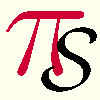
PiScript - a drawing tool for mathematicians
PiScript is a package
written by Bill Casselman
in the programming language Python that interfaces in
a straightforward way to PostScript graphics commands.
It is designed for use by those who are interested in
producing graphics in mathematical exposition.
Its principal features are the directness of the interface
and the ease with which one can insert TEX text into figures.
WARNING! PiScript
currently runs only under the operating systems Linux and MacOSX.
Downloads, installation, updates
Go to the page
Documentation
Examples
You will see the Python file that produced an image if you click on it
(assuming your browser is set to load .py files as text files,
which it should do for security reasons). If you have installed a
tool to view .eps files, you may also click on the
file names beneath the image.
The following are multi-page displays:
Other links
Other graphics packages for mathematicians
-
 PGF & TikZ.
See also Kjell Fauske's home page and the page of TikZ examples. PGF & TikZ.
See also Kjell Fauske's home page and the page of TikZ examples.
This is one of several packages that make
pictures in a LaTeX environment, rather than TeX/LaTeX in a
graphics environment, which I find by far
preferable. Still, this pair of related programs
do far better than others in this category.
For example, there is a 3D package using
Gene Ressler's Sketch,
which has many interesting features,
particularly the transparency effects.
Still, if God had intended us to program in TeX ...
As the discussion in the TikZ manual
of its lowest level shows, at this level
it is just a TeX interface to PostScript.
-
PSTricks
This is in effect a fairly direct
LaTeX interface to
PostScript, and rather awkward. Almost a random walk through
a small world of mathematics figures, little
overall design,
little control over output. PostScript is a rather
interesting, even elegant, programming language, but LaTeX ... ?
I find it curious
that many graphics tools for mathematicians
often assume that the user does not want to do
any real programming. Mathematicians are notoriously
conservative about computers, so maybe
they have a point.
-
 The Processing project The Processing project
More art than mathematics, but the images its enthusiastic users
produce are often really beautiful.
-
 MetaPost MetaPost
An interface to PostScript in Don Knuth's graphics language
MetaFont, which he designed and used to make
the Computer Modern fonts that come with TEX.
By John Hobby, a former student of Knuth's.
Much if not all of Knuth's own graphics is
done with this tool
(as you can see from
Knuth's
preprints page, particularly the
color
figures for dancing links),
and it is therefore not to be scorned.
To my eye, however, the figures it produces have
a rather monotonous style, which indicates that
variety, although possible in principle,
is not easy to achieve.
See also the Wikipedia
entry on MetaPost.
-

From the home page:
... inspired by MetaPost, with a much cleaner, powerful C++-like
programming syntax and floating-point numerics. It
seems surprisingly powerful. Among other features,
it has an interesting and sophisticated
approach to keeping certain parts of a figure
at a fixed size while scaling the rest (the sort of thing
PiScript handles
with its reversion routine revert).
-

Designed just to plot vector fields.
So it has just one trick, but it's a good trick, and
it performs it in a very sophisticated way.
-
PythonPS
Another Python interface to PostScript programming
from the very clever and amusing guy who brought you
the PostScript web server PSD-HTTPD
and much good PostScript advice.
Very spare, and perhaps not actively maintained.
-

Among all the packages mentioned here, this is closest to PiScript.
It handles TEX text in a similar fashion,
but does not follow the PostScript graphics model
very closely.
-

Similar in spirit as well as homonymous, but not a finished product
(and it is not clear to me that it is still an active project, either).
Like PYX, it does not follow PostScript as closely as I would like,
but it does have interesting TEX text placement.
-
 Matplotlib (which is
used in SAGE) Matplotlib (which is
used in SAGE)
This models itself on MatLab. Very powerful for big data plotting tasks.
-
 IPE IPE
By some of the authors of the fine book
Computational Geometry,
which is now in a third edition.
The book is one of the few about algorithms in computer graphics
that displays competent pictures. If the illustrations
in the book were written with IPE,
that's a good advertisement.
-
 VRR VRR
Like IPE, this is an interactive graphics tool,
rather than a programming tool. My impression is that neither
of them is useful for mathematicians
with little programming experience.
-
 Cinderella Cinderella
Designed mainly as an interactive drawing tool, it has somewhere inside
the scripting language CindyScript. Potentially very powerful.
-

The favourite of many for setting commutative diagrams, which it does well.
Based on TeX.
-

A standard tool, used by multitudes.
Ugly, ugly, ugly. But interactive. Not to say, well prepared.
-

Very limited.
NOTE: I welcome
comments on any of these tools (mail to cass at math.ubc.ca).
It would be extremely useful even to assemble a table
comparing features such as
- TEX and text handling
- programming convenience
- coordinate changes
- library quality
- 3D capability
- control of graphics details
- speed of rendering
- ease of expansion
and whatever else distinguishes a good graphics program.
It should include
elementary samples of coding. But this
is not a job for just one person.
|












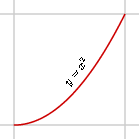
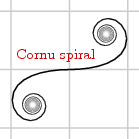
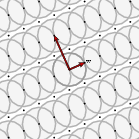

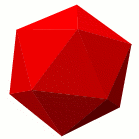

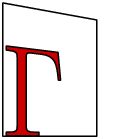




 PGF & TikZ.
See also Kjell Fauske's home page and the page of TikZ examples.
PGF & TikZ.
See also Kjell Fauske's home page and the page of TikZ examples.
 The Processing project
The Processing project
 MetaPost
MetaPost




 Matplotlib (which is
used in SAGE)
Matplotlib (which is
used in SAGE)
 IPE
IPE
 VRR
VRR
 Cinderella
Cinderella



 Bill Casselman's home page
Bill Casselman's home page